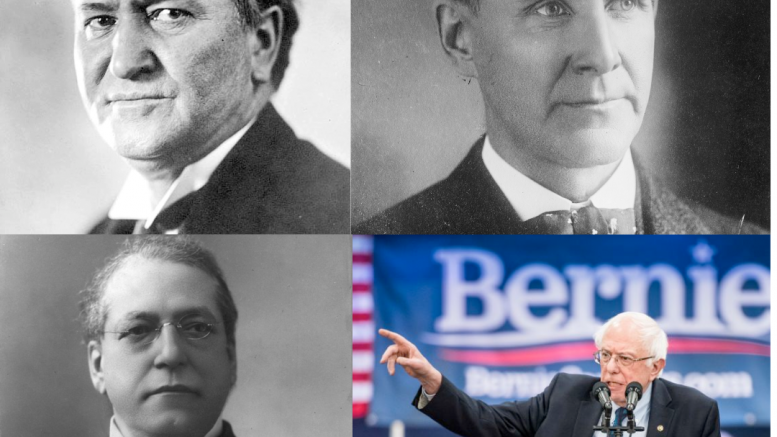The Bernie Sanders campaigns in 2016 and 2020 were a high-water mark for Socialist politics in the U.S.
Sanders, who campaigned as a Democrat, won over thirteen million votes, 43% of the total, in his first attempt. The self-defined “democratic socialist” came within a hair’s breadth of defeating Hillary Clinton and winning the Democratic nomination. He would almost certainly have defeated Donald Trump in the general election. It was a remarkable result, considering the history of socialist politics in the U.S.
Most historians point to 1912, when Eugene V. Debs, the Socialist Party candidate, won nearly a million votes, as the party’s “golden age”. Debs won even more votes in 1920, running as a federal prisoner, but it was a lower percentage due to the vastly increased electorate, which now included women.
Debs never ran again, and the Socialists entered a period of terminal decline. But what is usually missed is what happened in 1924. Arguably, that forgotten election was the most successful the Socialists ever fought — and there are lessons for progressives today.
That year, both the Democrats and Republicans nominated conservative candidates. Former Wisconsin governor Robert “Fighting Bob” La Follette went to work to put together a coalition to challenge the conservative dominance of American politics. La Follette was no Socialist, and had been a Republican, but his views and those of the Socialists overlapped on many key issues.
La Follette pulled together a wide range of organisations in his Conference for Progressive Political Action. In addition to farm groups, African Americans, women voters and others, La Follette managed to bring together two organisations which had previously had a fraught relationship: the American Federation of Labor, headed up by Samuel Gompers, and the Socialist Party of Eugene Debs. After twenty years of running independent Socialist campaigns, it was Debs who urged the party to support the Progressives in 1924.
On Election Day, the Democrats won the states of the former Confederacy, with the support of racist white voters, while the Republicans won pretty much everywhere else. The Communist Party decided to run its own candidate, William Z. Foster, who won fewer than 40,000 votes. The Progressives did surprisingly well. La Follette won over 4.8 million votes, which was five times what Debs had won in his best campaigns. One in six voters broke from the main parties to back the labour and Socialist-dominated Progressive campaign.
La Follette had insisted that the Progressives not field any candidates for lower office. This was entirely a Presidential campaign, and as a result, the movement collapsed shortly thereafter. Samuel Gompers died just after the election, La Follette died a year later, and was followed in 1926 by Debs.
There was never again to be a progressive third party effort on this scale in the U.S. Is there anything we can learn from the La Follette campaign of 1924 one century later?
For one thing, it showed that when the Socialists and the trade unionists teamed up, overcoming their differences, they became a force to be reckoned with. By breaking with sectarianism and embracing a popular form of progressive coalition politics, the Socialists had a huge impact. The 1924 La Follette campaign paved the way for Franklin D. Roosevelt and the New Deal — which ushered in the most progressive era in American history.
A century later, facing the real possibility of a second Trump presidency, the importance of building a progressive coalition politics for our time should be clear to all.
This column appears in this week’s issue of Solidarity.
